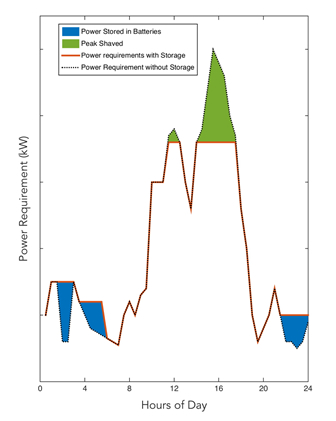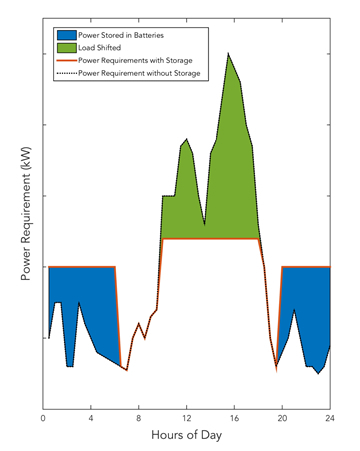We custom design and source the best in-class storage technology from proven manufacturers, taking beyond standard measures to ensure your investment in storage pays off for many years to come.
- Technology agnostic – we source only the best storage for your application that has undergone rigorous testing both on and off-field
- Safety is our priority – this includes electrical and mechanical safety measures during design and installation
- Advanced loads analysis and simulation – this helps insure ROI is maximized by sizing battery bank precisely
- Preventative maintenance – we undergo 3 maintenance cycles – an annual one, one every 3-5 years and one every 7-10 years (depending on battery choice)
- Upholding manufacturer warranties and ensuring longer warranty period
- Space efficiency and aesthetics – we custom design to adhere to our customers’ available space specifications. We can also provide outdoor rated enclosures.
- For lithium ion – thermal control improves lifespan and performance
- Advanced monitoring software – this speeds up curative maintenance if any issues were to arise, minimizing mean time to repair. Our experienced technicians will be on site as soon as we detect anything.
Storage can improve your home
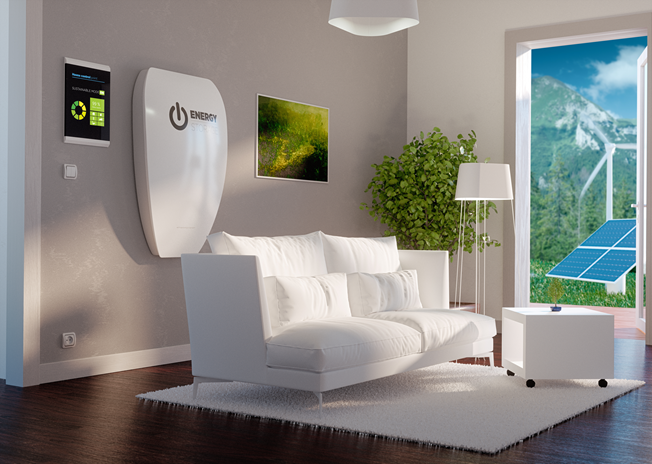
Maximize self-consumption of available solar resource by ensuring that all excess electricity is stored for usage at a later time when the solar resource is less or no longer available. Since most of the electric demand for residences occurs after the sun goes down, a grid-interactive (hybrid) system is the most effective. This can power a residence (offsetting up to 90% of electricity). The 10% from the grid is from isolated loads (such as pumps) as well as when the batteries reach a certain level of discharge (if lead acid). For Lithium Ion, the batteries can discharge up to 100% so the grid will only be called in for isolated loads or when there is multiple cloudy days.
Solar Self-Consumption – Maximize use of electricity generated by solar panels
Backup Power – Faultlessly deliver a sufficient source of backup power when the grid goes down –
Diesel Reduction – Reduce expense, carbon footprint, and dependence on imported diesel with fluctuating prices
Seamless storage for off-grid
Solar integrates seamlessly with storage to provide electrification for off grid uses. These include lodges, telecom towers, and residences.
Solar Self-Consumption – Maximize use of electricity generated by solar panels
Diesel Reduction – Reduce expense, carbon footprint, and dependence on imported diesel with fluctuating prices. The return on investment for off-grid applications is tremendous.

Storage for your business – OPEX savings and backup
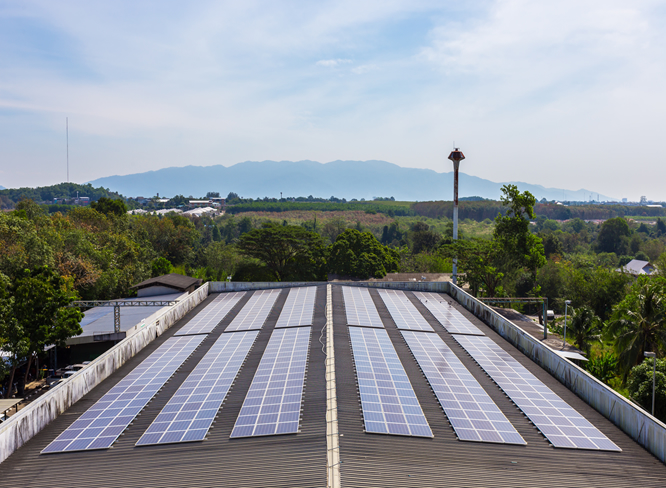
Peak shaving can help lower your demand charges whilst loads shifting helps you benefit from increasing usage off-peak and shifting this to on peak (to benefit from discounted off-peak rates). In addition, maximize solar consumption and backup your most critical loads. We perform sophisticated data logging to not only to size the storage correctly but also accurately quantify the potential monetized benefits of storage in our detailed cash-flow analysis that we provide to our clients.
Solar Self-Consumption – Maximize use of electricity generated by solar panels
Backup Power – Faultlessly deliver a sufficient source of backup power when the grid goes down –
Diesel Reduction – Reduce expense, carbon footprint, and dependence on imported diesel with fluctuating prices
Peak shaving – lower peak demand charges (see below)
Loads shifting – store during off-peak hours and discharge on-peak (see below)
Peak Shaving
All commercial customers of the grid get what is known as a demand charge on their electric bill, that is a flat rate multiplied by the peak demand at any point in a given month. This depends on your tariff rate, but can be up to 800 shillings per kVA Up to 40% of commercial and industrial electric bills can consist of demand charges.
For peak shaving, consider the above graph that shows how storage can reduce the (max) KWp demand over 24 hrs.
Load Shifting
Kenya has also recently passed a change to the electric retail tariff that cuts the nighttime rate (by a up to a third) for certain commercial and industrial off-takers. If this is applicable and you have storage, the storage can store energy at the off peak rate and deploy it at the peak rate, whilst also simultaneously performing peak shaving. Loads shifting, if done during peak demand hours, is also effectively peak shaving.
Mini-Grids with Advanced Storage Architecture
Storage is the most critical component of a mini-grid, since it comprises of the largest proportion of total cost of the mini-grid lifetime. Since current state technology is usually replaced 4-6 times over the life of the Mini-Grid, there is some serious room for improvement. Illumina is working to lower the replacement frequency of batteries in Mini-Grid applications by utilizing better technology such as Lithium ion.
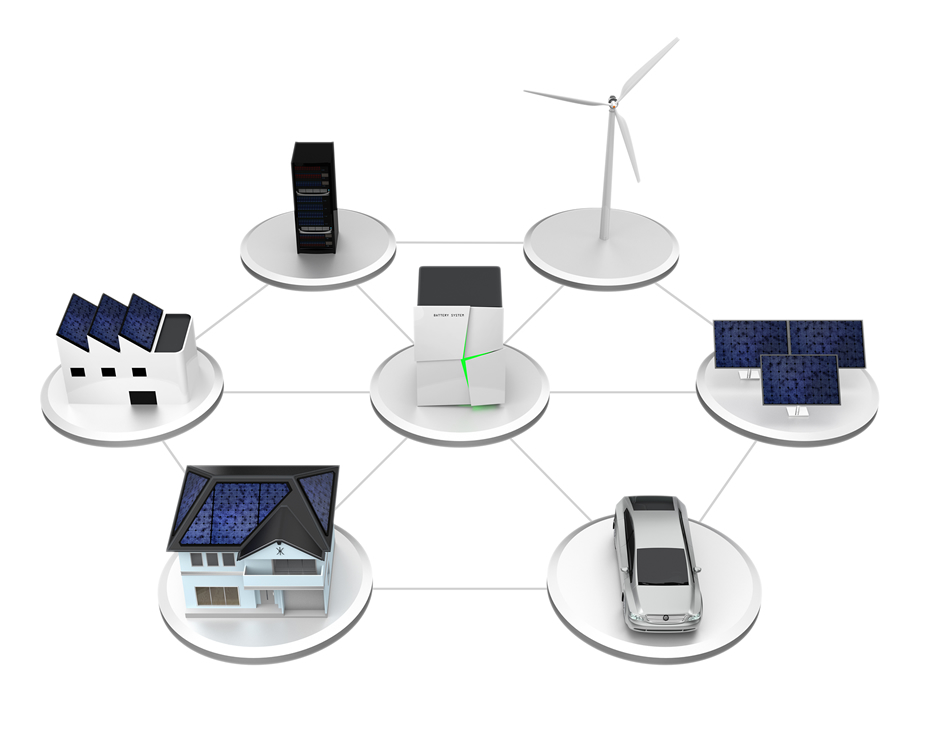
Turn-Key Utility Scale Integrated Storage
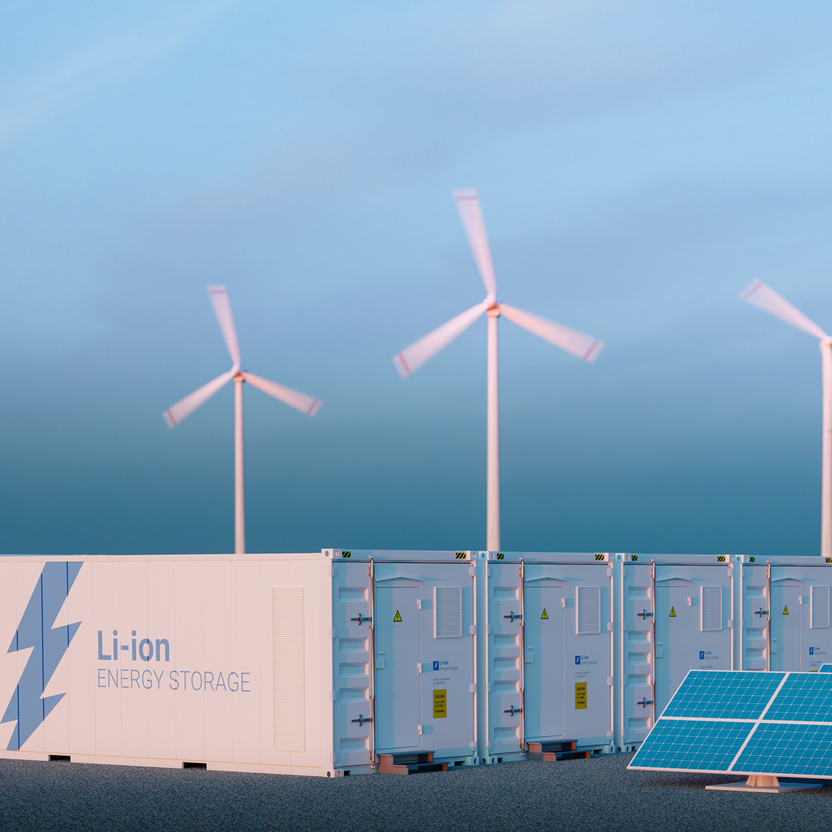
We design and perform all EPC work for utility scale renewables and solar integration.
Ancillary Services – Frequency response and other services to the grid
Flexibility – our storage options respond immediately
Demand response – Reduce burden on the grid caused by peak demand and peaker plants
Grid reliability – provide high quality power when necessary
Renewables integration – improve the reliability of power fed to the grid
Lithium Ion – a more effective storage
Since solar panels last over 25 years, when integrating storage it is necessary to perform a levelised cost calculation over the lifetime of the panels. This then takes into account expected replacement of the batteries and other factors like below
Lets compare the two main battery types under consideration. This is a general comparison and not breaking down individual chemistries for Li-Ion and Lead Acid.
| Characteristic for comparison | Lithium Ion | Lead Acid |
|---|---|---|
| Initial Investment | Higher upfront investment | Lower upfront investment |
| Maturity of technology | Newer | Older |
| Number of cycles | Up to 5000 cycles at 80% Depth of Discharge (DoD) | Up to 3000 cycles at 50% DoD |
| Recycling facilities | Coming Up, but there will be a large recycling market for Li-Ion batteries installed today | Recycling facilities already exist
|
| Energy Density | Much higher | Much lower |
| Deep cycling capability | 100% DoD capability, so a smaller battery bank size required for the same kWh of storage.
We design for 80% DoD. |
Recommended at 50% DoD, so needs 60% more battery size vs. Li-Ion for the same kWh of storage |
| Cost per usable Kwh per cycle | Lower | Higher |
| Ability to add more batteries to existing in future | Yes, using AC-coupled design | Yes, using AC-coupled design. |
| Performance when voltage level drops (at a lower state of charge/SoC) | The voltage vs state of charge curve of lithium batteries (especially relative to lead acid) is essentially flat – means that a 20% charged battery will be providing nearly the same output voltage as an 80% charged battery | Discharge performance drops as voltage level reduces with the state of charge of the battery |
| Effect of higher currents (larger loads) | Li-Ion is better suited to deliver at full rated capacity and power for higher discharge current loads such as A/C, refrigerators etc. | Peurkert’s losses mean that lead acid is not really suitable for loads requiring a higher current |
| Charge Efficiency/Round Trip Losses | Higher charge efficiency of ~90% | Lower charge efficiency of ~85% |
| Performance under higher operating temperatures | Low heat losses – beneficial in climates such as Kenya.
|
Experiences greater efficiency reduction for higher temperatures |
| Charge and discharge speed | Can charge and discharge faster, retaining capacity (unlike lead acid)
|
Fast charging/discharging can significantly damage the battery |

